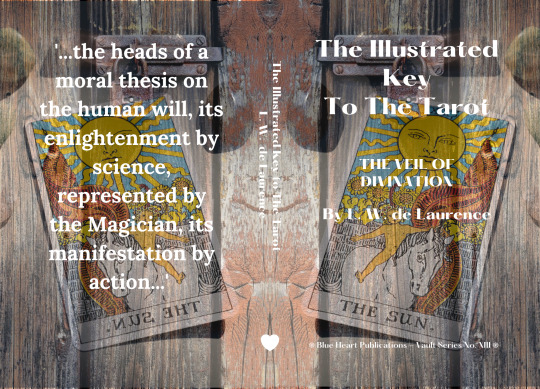#cultural influences
Text
The Philosophy of Ignorance
The philosophy of ignorance, also known as agnoiology, epistemology of ignorance, or agnotology, explores the nature, causes, and implications of ignorance. It delves into questions about the limits of human knowledge, the origins of ignorance, and the role of ignorance in shaping individual and societal beliefs and actions. Here are some key aspects of the philosophy of ignorance:
Nature of Ignorance: The philosophy of ignorance investigates the concept of ignorance itself, considering it as a lack of knowledge or understanding about a particular subject or topic. It examines different types of ignorance, such as factual ignorance (lack of specific information) and strategic ignorance (deliberate avoidance of knowledge).
Causes of Ignorance: Agnoiology explores the factors that contribute to ignorance, including cognitive biases, cultural influences, educational systems, social norms, and political agendas. It examines how ignorance can arise from limited access to information, misinformation, or disinformation propagated by various sources.
Epistemological Challenges: The philosophy of ignorance raises epistemological questions about the reliability of human cognition and the extent to which knowledge can be attained. It considers whether ignorance is an inherent aspect of human nature or a result of external factors that inhibit the acquisition of knowledge.
Ignorance and Power: Agnoiology explores the relationship between ignorance and power, recognizing that ignorance can be wielded as a tool of manipulation and control by those in positions of authority. It investigates how systems of oppression and domination perpetuate ignorance to maintain social hierarchies and inequalities.
Social and Cultural Dimensions: The philosophy of ignorance analyzes the role of ignorance in shaping cultural beliefs, collective attitudes, and societal norms. It examines how ignorance can be culturally constructed and maintained through social institutions, ideologies, and practices.
Ignorance and Ethics: Agnoiology raises ethical considerations about the moral responsibilities associated with ignorance. It questions whether individuals have an obligation to seek knowledge and overcome ignorance, especially when it perpetuates harm or injustice.
Epistemic Virtues and Vices: The philosophy of ignorance explores epistemic virtues (such as curiosity, open-mindedness, and intellectual humility) and vices (such as dogmatism, closed-mindedness, and intellectual arrogance) that influence how individuals engage with ignorance and knowledge.
Overcoming Ignorance: Agnoiology considers strategies for overcoming ignorance, including education, critical thinking, empirical inquiry, and the cultivation of epistemic virtues. It emphasizes the importance of fostering a culture of inquiry and skepticism to counteract ignorance and promote intellectual growth.
In summary, the philosophy of ignorance investigates the complex phenomenon of ignorance, addressing its conceptual, epistemological, social, and ethical dimensions. It offers insights into the nature of human cognition, the dynamics of power and knowledge, and the challenges of navigating an uncertain and complex world.
#philosophy#epistemology#knowledge#learning#chatgpt#education#ontology#metaphysics#ethics#psychology#Agnoiology#Epistemology of Ignorance#Agnotology#Factual Ignorance#Strategic Ignorance#Cognitive Biases#Social Construction of Ignorance#Power and Knowledge#Cultural Influences#Epistemic Virtues and Vices#Ethics of Ignorance#Overcoming Ignorance#ignorance#truth
2 notes
·
View notes
Text
Moroccan Mystique: Unveiling the Magic of Moorish Interior Design

View On WordPress
#Arabian Nights#Cultural Influences#Desert-Inspired Decor#Enchanting Ambiance.#Exotic Decor#Geometric Patterns#Global Interiors#Moorish Interior Design#Moroccan Mystique#Opulent Textures
6 notes
·
View notes
Text
Which Region Dominates? 75 Essential Comparisons of American and European Homes
Introduction
Real estate discussions are often saturated with debates about location, price, and size, but what often slips under the radar are the subtle yet significant variations in architectural design, construction practices, and inherent features that differentiate homes across the globe. This article sets out on an ambitious journey, dissecting and comparing the unique attributes of…

View On WordPress
#accessibility#American homes#architectural design#architectural diversity#balconies#barbecue pits#basements#bicycle storage#carports#central vacuum#comfort#cost-effectiveness#cultural influences#decks#durability#en-suite bathrooms#energy efficiency#European homes#fireplaces#garages#garden sheds#gardens#geographical influences#GFCI outlets#gourmet kitchens#greenhouses#hardwood floors#home advantages#home comparison#home construction
2 notes
·
View notes
Text
Exploring the Rich History of the Soninke People in Mali
Unveiling the Fascinating Soninke People of West Africa
The Soninke people are an ethnic group with a rich cultural heritage deeply intertwined with the history of West Africa. This article delves into the fascinating world of the Soninke, exploring their origins, traditions, and the significant impact they had on the development of empires in the region. Whether you’re a history buff, an…

View On WordPress
#Cultural Diversity#Cultural Heritage#Cultural Influences#Cultural Tapestry#Ethnic Groups#Ghana Empire#Historical Significance#inclusivity#Interpretation Services#Language Access#Language Services#LanguageXS#Mande Language#Soninke Diaspora#Soninke Language#Soninke People#West Africa#West African Traditions
0 notes
Text
A Historical Insight into Spanish Adjectives
The Evolution
In the annals of linguistic evolution, the origins of adjectives trace back to the dawn of human expression. As early societies sought to navigate their world, they crafted descriptors to distinguish between the mundane and the extraordinary. From the primal grunts of our ancestors to the eloquent prose of ancient civilizations, adjectives emerged as the bridge between thought and…

View On WordPress
#Adjective Agreement#Beginner Spanish#Beginner Spanish Language Essentials#Cultural influences#education#English (Advanced English Learners)#english-language#english-learning#Grammar Tips#Historical Exploration#Impact of Culture#language#Language development#Language diversity#Language evolution#Language heritage#Language Origins#language-learning#languages#learn-english#learning#Linguistic journey#Mastering Adjectives#Spanish#Spanish Adjectives#Spanish grammar#Spanish language#Unraveling Grammar
0 notes
Text
Clothing is more than mere fabric; it's a language we wear, communicating aspects of our identity, personality, and values to the world. From the colours we choose to the cuts we favour; every garment serves as a brushstroke on the canvas of our self-expression. In this exploration, we delve into the intricate relationship between clothing and personal identity, unravelling the threads that connect fashion to the essence of who we are.
#authenticity#celebrity culture#challenging traditional norms#clothing choices#creativity#cultural influences#empowering women through fashion#empowerment#empowerment in india#empowerment through fashion#fashion#gender-fluid fashion#identity formation#identity formation through clothing#inclusivity#individuality#media influence#norms#personal identity#psychology of clothing#self-expression#social media influencers#societal influences#stereotypes#style#sustainable fashion
0 notes
Text
Seasonings and Spices Market Is Predicted To Hit USD 56,796 Million by 2030
The majority of the time, spices and seasonings are employed as additives or antibacterial experts, but they are also used to give flavor, scent, diversity, and taste to food and beverages. Comfort food producers use these characteristics of spices and seasonings to enhance their products’ quality and flavor and lengthen their shelf lives.
Customers’ openness to trying new spices and their…

View On WordPress
#aromas#blends#culinary enhancements#cultural influences#emerging trends#flavors#Growth#health#herbs#Innovation#Key players#market analysis#Market dynamics#seasonings#spices#sustainability
0 notes
Text
"Bridging the Mystical Realm: Exploring 'The Illustrated Key To The Tarot' by L. W. de Laurence"

L. W. de Laurence's "The Illustrated Key to the Tarot: The Veil of Divination" stands as a classic work that has guided countless enthusiasts through the intricate tapestry of the tarot. From the moment one embarks on this journey through the pages of de Laurence's comprehensive guide, it becomes evident that the author possesses a deep and nuanced understanding of the mystical world of divination.
The title itself, "The Illustrated Key to the Tarot," alludes to the invaluable resource that lies within these pages. De Laurence's approach is both scholarly and accessible, making this work suitable for both seasoned practitioners and newcomers to the world of tarot. The inclusion of illustrations enhances the learning experience, providing visual cues that complement the detailed explanations of each card's symbolism, meaning, and potential interpretations.
The book serves as a masterful introduction to the tarot, elucidating the origins of this ancient system and its evolution over the centuries. De Laurence navigates through the symbolism of the major and minor arcana with clarity, unraveling the threads of esoteric wisdom that connect each card. The historical context and cultural influences that have shaped the tarot are meticulously explored, providing readers with a holistic understanding of this divinatory art.
What sets "The Illustrated Key to the Tarot" apart is its practical approach to divination. De Laurence not only unveils the symbolic language of the tarot but also offers guidance on how to conduct readings. The inclusion of spreads, interpretations, and examples ensures that readers can immediately begin applying their newfound knowledge. This blend of theory and practical application makes the book a valuable tool for those seeking to deepen their tarot practice.
However, it is crucial to acknowledge the controversial nature of L. W. de Laurence, a figure whose contributions to occult literature have been both praised and criticized. His influence on the dissemination of esoteric knowledge is undeniable, yet his methods and business practices have sparked debates within the occult community. Readers approaching this work should be aware of the historical context surrounding the author and approach the material with discernment.
In conclusion, "The Illustrated Key to the Tarot: The Veil of Divination" by L. W. de Laurence stands as a timeless guide to the mystical art of tarot reading. Whether one is a novice seeking an entry point into the world of divination or an experienced practitioner aiming to deepen their understanding, this book provides a rich tapestry of knowledge and insight. De Laurence's meticulous exploration of the tarot's symbolism, coupled with practical applications, ensures that this work remains a valuable resource for those who wish to unlock the secrets veiled within the cards.
L. W. de Laurence's "The Illustrated Key to the Tarot: The Veil of Divination" is available in Amazon in paperback 13.99$ and hardcover 21.99$ editions.
Number of pages: 277
Language: English
Rating: 8/10
Link of the book!
Review By: King's Cat
#L. W. de Laurence#The Illustrated Key to the Tarot#Tarot divination#Esoteric wisdom#Major arcana#Minor arcana#Symbolism#Tarot origins#Historical context#Cultural influences#Divinatory art#Visual illustrations#Tarot interpretations#Practical application#Tarot spreads#Tarot readings#Occult literature#Mystical traditions#Symbolic language#Tarot symbolism#Tarot practitioner#Tarot cards#Tarot meanings#Divination techniques#Tarot history#Tarot guidance#Esoteric knowledge#Occult community#Controversial figure#Tarot practice
0 notes
Text
"Bridging the Mystical Realm: Exploring 'The Illustrated Key To The Tarot' by L. W. de Laurence"

L. W. de Laurence's "The Illustrated Key to the Tarot: The Veil of Divination" stands as a classic work that has guided countless enthusiasts through the intricate tapestry of the tarot. From the moment one embarks on this journey through the pages of de Laurence's comprehensive guide, it becomes evident that the author possesses a deep and nuanced understanding of the mystical world of divination.
The title itself, "The Illustrated Key to the Tarot," alludes to the invaluable resource that lies within these pages. De Laurence's approach is both scholarly and accessible, making this work suitable for both seasoned practitioners and newcomers to the world of tarot. The inclusion of illustrations enhances the learning experience, providing visual cues that complement the detailed explanations of each card's symbolism, meaning, and potential interpretations.
The book serves as a masterful introduction to the tarot, elucidating the origins of this ancient system and its evolution over the centuries. De Laurence navigates through the symbolism of the major and minor arcana with clarity, unraveling the threads of esoteric wisdom that connect each card. The historical context and cultural influences that have shaped the tarot are meticulously explored, providing readers with a holistic understanding of this divinatory art.
What sets "The Illustrated Key to the Tarot" apart is its practical approach to divination. De Laurence not only unveils the symbolic language of the tarot but also offers guidance on how to conduct readings. The inclusion of spreads, interpretations, and examples ensures that readers can immediately begin applying their newfound knowledge. This blend of theory and practical application makes the book a valuable tool for those seeking to deepen their tarot practice.
However, it is crucial to acknowledge the controversial nature of L. W. de Laurence, a figure whose contributions to occult literature have been both praised and criticized. His influence on the dissemination of esoteric knowledge is undeniable, yet his methods and business practices have sparked debates within the occult community. Readers approaching this work should be aware of the historical context surrounding the author and approach the material with discernment.
In conclusion, "The Illustrated Key to the Tarot: The Veil of Divination" by L. W. de Laurence stands as a timeless guide to the mystical art of tarot reading. Whether one is a novice seeking an entry point into the world of divination or an experienced practitioner aiming to deepen their understanding, this book provides a rich tapestry of knowledge and insight. De Laurence's meticulous exploration of the tarot's symbolism, coupled with practical applications, ensures that this work remains a valuable resource for those who wish to unlock the secrets veiled within the cards.
L. W. de Laurence's "The Illustrated Key to the Tarot: The Veil of Divination" is available in Amazon in paperback 13.99$ and hardcover 21.99$ editions.
Number of pages: 277
Language: English
Rating: 8/10
Link of the book!
Review By: King's Cat
#L. W. de Laurence#The Illustrated Key to the Tarot#Tarot divination#Esoteric wisdom#Major arcana#Minor arcana#Symbolism#Tarot origins#Historical context#Cultural influences#Divinatory art#Visual illustrations#Tarot interpretations#Practical application#Tarot spreads#Tarot readings#Occult literature#Mystical traditions#Symbolic language#Tarot symbolism#Tarot practitioner#Tarot cards#Tarot meanings#Divination techniques#Tarot history#Tarot guidance#Esoteric knowledge#Occult community#Controversial figure#Tarot practice
1 note
·
View note
Text
Music Genre - Melodic Metal
In the realm of music, Melodic Metal stands as a genre that bridges the worlds of powerful, electrifying sound and melodic, emotional depth. Explore the journey of Melodic Metal, from its pioneering bands to its global influence, lyrical storytelling to l
In the world of heavy music, where thunderous riffs, blistering guitar solos, and thunderous drumbeats reign supreme, there exists a subgenre that adds a unique dimension to the sonic landscape. It’s a genre that marries the aggression and power of heavy metal with the beauty and emotion of melody. Welcome to the realm of Melodic Metal, a genre that has captured the hearts of metalheads and music…

View On WordPress
#African Metal#Alternative Metal#Artistic Expression#Asian Metal#Concerts#Contemporary Music#Cross-Cultural Music#Cultural Fusion#Cultural Influences#Djent#Dreams and Imagination#Drumming#Dual Guitar Harmonies#Electronic Metal#Emotional Depth#Emotional Lyrics#Emotional Music#Emotional Resonance#Epic Music#Epic Stage Productions#European Metal#Existential Themes#Fan Dedication#Fan Unity#Fantasy Themes#Future of Music#Genre Fusion#Genre Impact#Genre Significanc#Global Music
0 notes
Text
How does one interpret the use of geometric patterns in Middle Eastern art?
Geometric patterns have long been a hallmark of Middle Eastern art, captivating viewers with their intricate designs and mesmerizing symmetrical arrangements. These patterns are not merely decorative elements; they carry deep cultural, spiritual, and symbolic meanings. In this article, we will explore the methods and approaches one can employ to interpret the use of geometric patterns in Middle…

View On WordPress
#art appreciation#art forms#artistic expression#balance#contemporary interpretations#craftsmanship#cultural identity#cultural influences#cultural traditions#divine nature#geometric patterns#heritage#Interpretation#intricate designs#mathematical foundations#mathematical principles#mathematical ratios#Middle Eastern art#optical illusions#regional variations#spiritual significance#Symbolism#symmetry#tessellation#tiling#transcendence#unity#visual complexity#visual intrigue
1 note
·
View note
Text
The Balance Between Realistic and Unrealistic Relationship Expectations
Entering a relationship often comes with a set of expectations, shaped by personal experiences, societal influences, and media portrayals of love. However, the line between realistic and unrealistic expectations can be blurry. Understanding this distinction is crucial for fostering healthy, fulfilling relationships. This article explores the differences between realistic and unrealistic…

View On WordPress
#Acceptance#Adaptability#Boundaries#Commitment#communication skills#Compatibility#Compromise#Cultural Influences#Emotional intimacy#Emotional Wellness#Empathy#Empowerment#Expectation Alignment#Expectation Management#Fantasy vs Reality#Healthy Relationships#Idealization#Intimacy#Long-term Relationships#love and affection#Managing Disappointments#Media Influence#Mutual Understanding#Positive Communication#Practical Expectations#Realistic Love#Realistic Relationships#Relationship Development#Relationship expectations#Relationship Growth
0 notes
Text
As requested, I have examined my fondness for terrible characters, and I have concluded that I like them because they're terrible and I'm not sorry.
#light yagami#joe goldberg#jack shephard#joshua kiryu#ardyn izunia#james sunderland#arnold rimmer#this entry brought to you because someone recommended YOU to me#so i checked out the wikipedia article#and the 'cultural influence' section was MADDENING#extremely patronising to be so concerned#about all these foolish and misguided women#(not exclusively women#but i do feel i mainly see this 'concern' targeted at women)#expressing fondness for a Bad Person#who is Not Real
9K notes
·
View notes
Text
Fashion is a universal language that beautifully weaves together cultures, traditions, and personal expression. Ethnic fashion, with its rich tapestry of colors, patterns, and techniques, offers a fascinating journey into the sartorial heritage of various communities worldwide. In this blog post, we will embark on an exploration of ethnic fashion trends from around the world, highlighting the fusion of traditional and modern styles, and celebrating the diverse influences that shape contemporary fashion.
#2023 fashion trends#2023 fashion trends woman#ankara prints#artistry#bandhani tie-dye#block printing#central american fashion#cultural influences#cultural legacies#east asian fashion#ethnic fashion trends#fashion brands in india#fashion trends girls#fashion trends in india#fusion styles#global fashion#hanbok#handloom fabrics#indian ethnic fashion trends 2023#indian fashion for women#indian motifs#indigenous techniques#j-fashion#k-fashion#kimono#latest fashion#latest fashion dresses#latest fashion of kurtis#latest fashion trends#latest fashion trends in india
1 note
·
View note
Text
The Hidden Forces: How Subconscious Beliefs Influence Behaviour
Have you ever wondered why we do the things we do? Well, it turns out that our actions are influenced by two parts of our mind: one we’re aware of (conscious) and another that works in the background (subconscious). Our conscious thoughts and choices are important, but there’s also a hidden part of our mind, the subconscious, that has a big say in how we act. It’s like our secret superpower! This…

View On WordPress
#social conditioning#self-sabotage#perception#limiting beliefs#subconscious mind#empowering beliefs#beliefs#uncovering beliefs#mindfulness#rewriting beliefs#childhood perceptions#emotions#power of the subconscious mind#power of perception#subconscious beliefs#personal growth#human behaviour#belief formation#early childhood experiences#cultural influences
0 notes
Text
Spanish Nouns and Their Unique Traits Compared to English
Exploring the Evolution
Spanish nouns, like their English counterparts, have evolved over centuries, shaped by the cultures and languages that have influenced the Iberian Peninsula. The Spanish language itself has deep roots, with influences from Latin, Arabic, and various Romance languages.
One of the most distinguishing features of Spanish nouns is their grammatical gender, a trait inherited…

View On WordPress
#Communication dynamics#Cultural influences#education#English (Advanced English Learners)#English vs Spanish#english-language#english-learning#Gendered nouns#Grammatical gender#inglés#language#Language appreciation#Language Comparison#Language complexity#Language evolution#Language heritage#Language history#Language nuances#language-learning#languages#Latin influence#learn-english#learning#Linguistic differences#linguistic diversity#Noun gender#Spanish grammar#Spanish language#Spanish nouns
0 notes